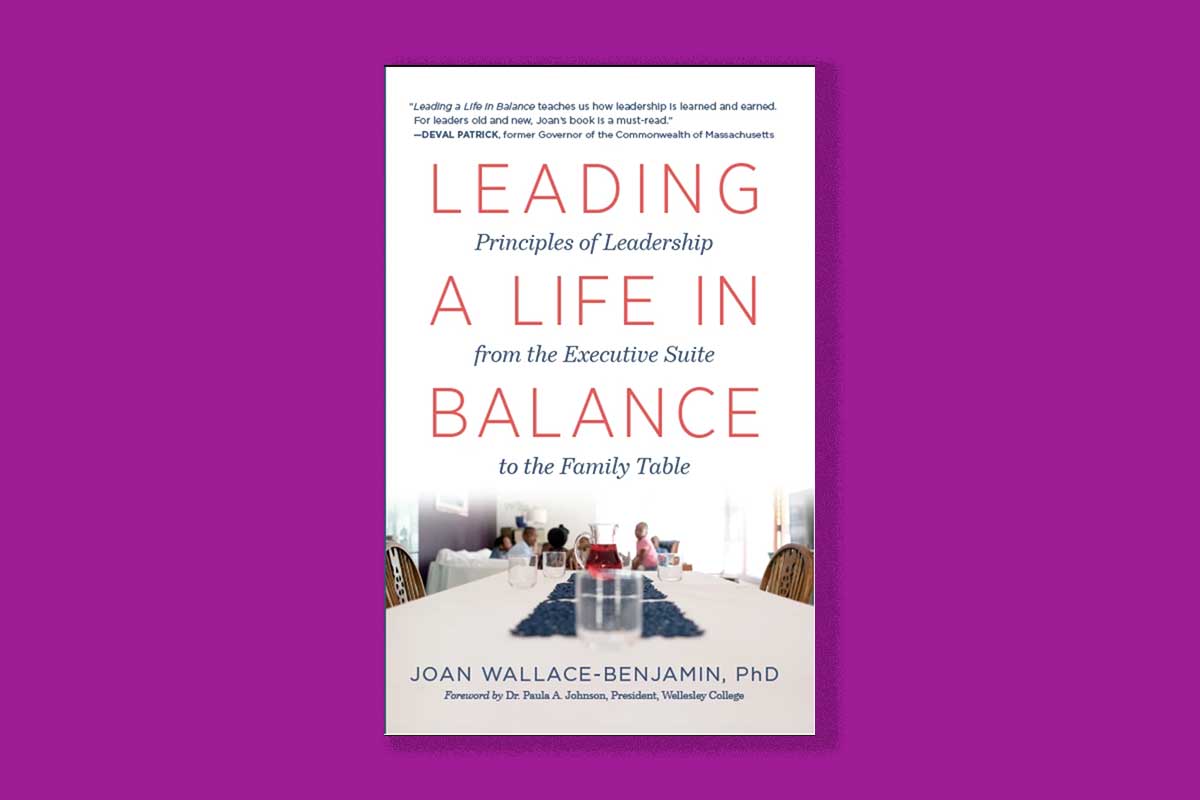
For years it was a secret: that we had lives outside of work.
Thirty years ago, I dashed into the Massachusetts State House to interview the lieutenant governor, sat, opened a notebook—and a Cheerio fell off my blazer. I was mortified.
In those days, “juggling” was done with guilt. As a society, we debated whether women “could do both,” that is, be a parent and a professional. There is “the mommy track,” of course, an invention that codifies the failure of the American workplace.
The pandemic—ironically enough—may finally give us the opportunity to correct historic and structural problems with how work works.
That is not to say that the last nearly two years have not been tough. Working women with children and/or caretaking roles have been hit hard.
According to the U.S. Census, nearly 45 percent of mothers with school-aged children were not working in April 2020. A Deloitte Women @ Work survey of 5,000 women conducted from November 2020 to March 2021 found 77 percent reporting an increased pandemic workload even as two-thirds also reported bearing the greatest role in household tasks.
More than half felt less optimistic about their career, citing physical and mental health tolls. Fifty-seven percent planned to leave their current job within two years.
This data (and there’s more) underscore the burden on women that we have long known about, but ignored. Rather than address the root issue, society leaned harder on women, expecting them to tap their creativity, energy, and endurance to keep it all going. (By “women” I refer not to biology, but to the gender role often occupied by females.)
. . . when women entered the workforce in increasing numbers in the 1960s-1980s, they did it on men’s terms, beginning a frustrating effort to “be taken seriously.” That issue has not faded . . .
Arlie Hochschild created a sensation when she published “The Second Shift” in 1989. But decades later, little has changed. This is because modern-day, post-Industrial Revolution work is structured with men in mind, from the timing of meetings to conventions of what a “leader” looks, sounds, and acts like (talking over others and peacocking your dominance).
Rather than challenge the structure, when women entered the workforce in increasing numbers in the 1960s-1980s, they did it on men’s terms, beginning a frustrating effort to “be taken seriously.” That issue has not faded, and reporting, surveys, and advice columns have repeatedly returned to the challenge—as if doing the work itself wasn’t enough.
Despite passage of laws, including Title VII of the Civil Rights Act of 1964 (prohibiting employment discrimination based on race, color, religion, sex, and national origin), the problem persisted. After all, it took a long time—and much debate—to shake the belief that we needed sex-separate “help wanted” ads or that, as a July 30, 1970 New York Times headline put it, “Doctors Deny Woman’s Hormones Affect Her as an Executive.”
When Title VII first went into effect, an official with the Equal Employment Opportunity Commission assigned to enforce the law insisted that it was not their task “to get on our charger to overturn patterns.” Yet patterns were (and are) exactly the problem. The New York Times wrote of “experts in sex discrimination” flummoxed by “the Bunny Problem”—how would the new law manage if a man applied for a job as a bunny at a Playboy Club?—under the August 20, 1965 headline, “For Instance, Can She Pitch for Mets?”
Such talk by officials and reportage by The New York Times now looks embarrassing. But it reveals the ingrained beliefs that we need to have sharp lines between women and men when it comes to work. Even if those lines have softened, a gender power differential remains in many fields. One has only to recall #MeToo coverage or examine the gender wage gap.
The pandemic offers us a reset button. We have been forced to work differently. We cannot un-see what we saw on Zoom.
To this last point, the Boston Women’s Workforce Council, whose analysis uses wage data from actual companies, reveals an ongoing issue. Interestingly, it tracks wage gaps by job role; the only positions in which women’s pay is comparable to men’s, according to the 2021 report, are “Laborers/Helpers” and “Administrative Support Workers.”
The pandemic offers us a reset button. We have been forced to work differently. We cannot un-see what we saw on Zoom. People have lives that are busy and complicated. Employers have been forced to trust employees to work away from the geography of the office and the gaze of supervisors. They learned that people, on their own, are actually quite productive.
Workers have also discovered there is more to one’s identity and life than work. We are now keenly aware that we have one life—and that things can change radically at any moment. We must use our time for stuff that matters. Work must now fit alongside other elements of life, not at the dominant center.
In November, a record 4.5 million Americans quit their jobs. Anyone who dines out or shops understands that the customer is no longer always right. It is a privilege to be served.
Employers everywhere are now in competition for talent. This alters the balance of power. It changes work conventions, such as how meetings run, who must be there, what the “workday” looks like, how power operates (no bonus points for hanging out at the office).
Let us hope it means an end to the “mommy track” mentality. The very notion that women with childcare responsibilities must degrade their ambition now looks repugnant. Or, taking away the moral layer, dumb.
It is telling that a co-working space in Brooklyn includes childcare. Men in leadership have long had flexibility in their work schedules (golf, anyone?). Why shouldn’t we all build in time for relationships and renewal?
America’s economy cannot afford to require people to choose between ambition and parenthood (or other caretaking). They are both part of life. The pandemic has been painful and exhausting. It’s not over yet. The past 20 months have been about survival, but they have also been about invention. In 2022, we must finally build a better workscape.
This does not mean replacing a male-normed workplace with a female-normed workplace. Rather, it means truly un-gendering jobs and work—and seeing one another not as employees or job functions, but as fellow human beings fully capable of both feeding a toddler Cheerios and writing a political profile.
Laura Pappano is writer-in-residence at the Wellesley Centers for Women. An experienced journalist who writes about education and gender equity issues in sports, she has been published in The New York Times, The Hechinger Report, USA Today, The Atlantic, The Boston Globe, The Washington Post, and Christian Science Monitor, among other publications.



 In my recently released book,
In my recently released book,  A few days ago, my eyes fell upon an online post discussing recent
A few days ago, my eyes fell upon an online post discussing recent  Even in this 21st Century, we have not yet come to accept that parenting is a shared component of our human condition. Every industry employs parents who are trying to balance their work obligations with their family roles. In fact, even non-parents can be called into a caregiving role, for example when their ageing parents need help. Gone are the days when a two-parent family could live on a single paycheck and when family roles were clearly divided. Therefore all of us, across gender and age, would benefit from a variety of workplace supports that accommodate our multiple roles as modern human beings.
Even in this 21st Century, we have not yet come to accept that parenting is a shared component of our human condition. Every industry employs parents who are trying to balance their work obligations with their family roles. In fact, even non-parents can be called into a caregiving role, for example when their ageing parents need help. Gone are the days when a two-parent family could live on a single paycheck and when family roles were clearly divided. Therefore all of us, across gender and age, would benefit from a variety of workplace supports that accommodate our multiple roles as modern human beings.